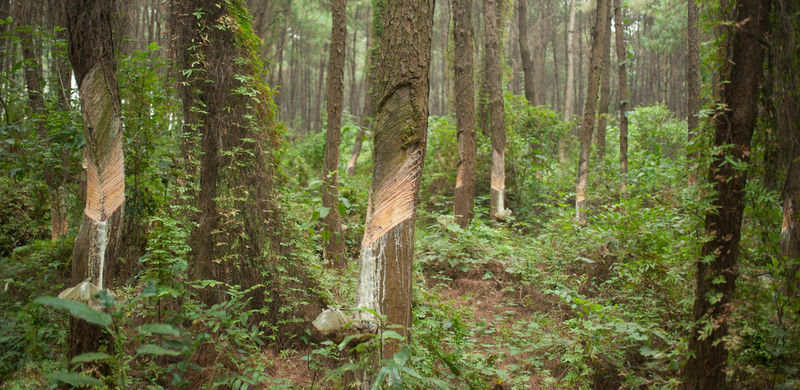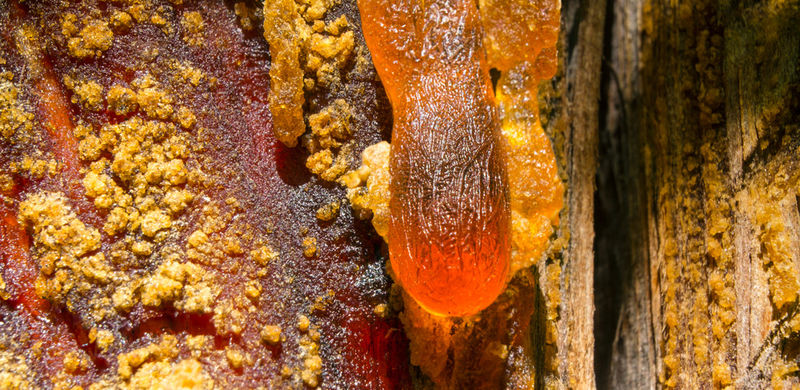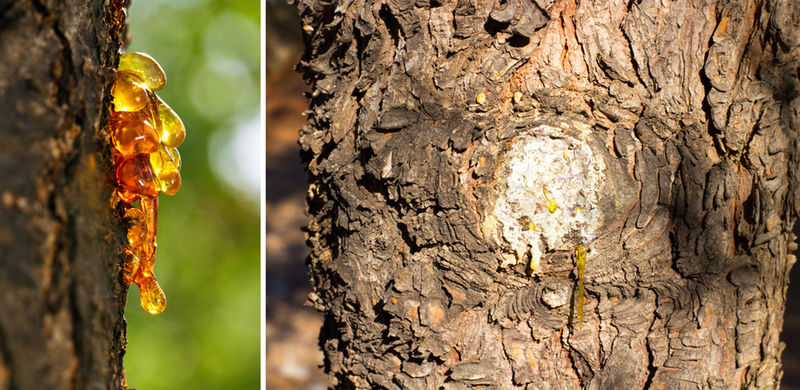|
In its natural state, resin is represented by resin (turpentine), which is produced by living cells of the epithelium of the resin canals or other intertissued containers of the resin. Longitudinal (vertical) and radial (horizontal) channels form a complex resin-bearing system in the wood of the trunk and branches. If you want to explore the enchanting world of resin and its significance in creating a cozy home environment, check out the insightful articles at yantar.ua.
In some conifers, such channels are formed when the tree is damaged, so they are called pathological. In the wood of healthy and damaged trees, there are also other intertissued containers of resin pockets, resin cysts, and other intercellular cavities, often lined with resin-forming epithelium. Normal resin channels are also found in the tissues of conifer leaves - they are located longitudinally. In the resin channels, the resin is under considerable pressure. If it weren't for such pressure, it would never have spilled out of the tree. In wood, the resin is well isolated from air oxygen, moisture, and light - the main agents to which it is exposed immediately after it is finished.
When the resin ducts are opened, the resin begins to flow out. The speed of the secretory process largely depends on the viscosity of the resin, the pressure in the system of resin channels and the amount of water entering the secretory cells.

Amber forest: resin of coniferous trees
Scientists do not yet have sufficient information about the resin secretion mechanism of conifers of the "amber" forest. Some tend to believe that in Paleogene conifers, unlike modern pines, the resin pockets were slightly larger, and the resulting resin was less viscous than the resin of modern conifers. In addition, they contain a significant amount of resin, which was concentrated not only in the trunk and branches but even in the roots and needles. That is, the resin productivity of pines in the distant past was a common phenomenon. A number of reasons for the regional order contributed to this. The increase in tar secretion is explained primarily by a sharp change in the climate towards warming. It has been noticed that as one moves south, resin secretion in modern conifers gradually increases. Finally, the nature of discharge is affected by humidity. In warm, humid weather, the amount of resin discharge increases sharply. But an excessive amount of moisture has a negative effect on this process. A less abundant outflow of resin occurred as a result of various damage to trees - during spring storms, thunderstorms, hurricanes, as well as when they were damaged by forest pests that gnawed, pecked, pierced the bark, forcing the trees to "heal" the wounds.
Geologist L. I. Matrunchyk suggested that the abundant release of resin by conifers is caused by the influence of some chemical elements, in particular boron - it was from this that the tree tried to protect itself. The resin protected the area of the tree from infection through the wound (hence its Russian name).

Gradually thickening and congealing, the resin formed variously shaped saps, clots, bunches, drops, and influxes on the trees. The periodic release of resin from the tree led to the appearance of layered structures of resin (and amber), and their good exfoliation serves as confirmation that new portions were poured onto the already hardened layer. Almost all insects and plant remains in excavated resins were found to be trapped precisely between such layers. Note that resin was released not only during the day, but also at night. This is evidenced by the findings in amber of haymaker spiders and insects (bristle-tails, cockroaches, beetles, earwigs) that lead a nocturnal lifestyle. Conifers grew, lived and fell, their wood rotted, and the resin released by them remained and accumulated in the soil.

Definition of the term "resin": composition of resin
Resin is a complex, multi-component, dynamic composition, but a non-aggregated substance. Its composition includes turpentine, water and a significant amount of resin acids (up to 65%). This is one of the forms of existence of physiologically active resins in nature. Flowing from the damaged trunk, the resin partially evaporates, losing moisture and volatile turpentine, and the resin remains as a growth on the bark of the tree. Liquid, viscous and solid components of resins consist mainly of monoterpenes, sesquiterpenes, diterpenes and their derivatives. Monoterpenes serve as the main chemical defense in conifers. According to their structure, they are acyclic, monocyclic and bicyclic. Sesquiterpenes in resins are much less than monoterpenes.
The great connoisseur of nature M. Prishvin wrote that we would not know anything about forest resins if conifers did not have wounding wood enemies: the trees secrete an aromatic balm flowing into the wound. The writer calls resin a hidden power. After a long exposure in the open air, the resin dries and turns yellow, turpentine and resin acids evaporate from it, and the residue becomes solid.
The chemistry of resin acids is insufficiently studied. In conifers, abietic acid, the main component of rosin, dextropimaric and levopimaric acids are most common. One of the reasons for the biological inertness of resins is explained by their low solubility in water.
|

